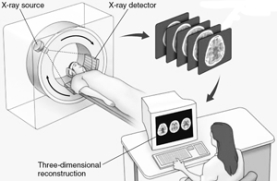A) immunocytochemistry
B) in situ hybridization
C) cerebral dialysis
D) electroencephalography
E) both A and B
Correct Answer

verified
Correct Answer
verified
Multiple Choice
The reason why radioactive 2-DG is useful for revealing the level of activity of neurons in different parts of the brain is that 2-DG
A) is absorbed by neurons in relation to their level of activity.
B) is metabolized by neurons in relation to their level of activity.
C) is not metabolized by neurons.
D) both A and C
E) both A and B
Correct Answer

verified
Correct Answer
verified
Multiple Choice
In rats, "boxing" is usually a sign of
A) sexual motivation.
B) aggression.
C) predation.
D) defense against conspecific attack.
E) a lack of sexual motivation in alpha males.
Correct Answer

verified
Correct Answer
verified
Short Answer
The two most common techniques for producing images of human brain function are PET and functional __________.
Correct Answer

verified
Correct Answer
verified
Multiple Choice
The signals in the first few milliseconds of the average auditory evoked potential
A) always originate next to the scalp electrode.
B) are far-field potentials.
C) originate in the sensory nuclei of the brain stem.
D) all of the above
E) both B and C
Correct Answer

verified
Correct Answer
verified
Short Answer
If a rat is hurt by an object in a test chamber containing commercial bedding material, the rat will often __________ the object.
Correct Answer

verified
Correct Answer
verified
Multiple Choice
Drugs that don't penetrate the blood brain barrier can be administered to brain tissue
A) by SC injection.
B) through a stereotaxically positioned cerebral cannula.
C) through an intracerebral microelectrode.
D) by IV injection.
E) by injection into a carotid artery.
Correct Answer

verified
Correct Answer
verified
Multiple Choice
The elevated plus maze is commonly employed to study
A) memory.
B) anxiety or defensiveness.
C) aggression.
D) all of the above
E) both A and C
Correct Answer

verified
Correct Answer
verified
Multiple Choice
Positron emission tomography is a valuable research tool because it
A) pictures the brain in fine detail.
B) involves angiography.
C) provides an image of brain function.
D) provides an image of brain structure.
E) involves low levels of radioactivity.
Correct Answer

verified
Correct Answer
verified
Multiple Choice
Unlike brain-imaging techniques, TMS permits the study of __________ between human cortical activity and cognition.
A) links
B) causal relations
C) correlations
D) neural connections
E) communication
Correct Answer

verified
Correct Answer
verified
Multiple Choice
Extracellular unit recording provides information about
A) the magnitude of the membrane potential.
B) the wave form of action potentials.
C) EPSPs.
D) all of the above
E) none of the above
Correct Answer

verified
Correct Answer
verified
Multiple Choice
Which of the following is a test of language ability that employs objects of two shapes, two sizes, and five different colors?
A) block-span test
B) token test
C) aphasia subtest of the Halstead-Reitan Neuropsychological Test Battery
D) paired-associate test
E) Wechsler Language Scale Test
Correct Answer

verified
Correct Answer
verified
Multiple Choice
The self-stimulation paradigm is
A) a Pavlovian conditioning paradigm.
B) an operant conditioning paradigm.
C) a punishment procedure.
D) both A and C
E) both B and C
Correct Answer

verified
Correct Answer
verified
Multiple Choice
Memories that are demonstrated by improved performance in the absence of conscious awareness of the memories are called
A) implicit memories.
B) explicit memories.
C) semantic memories.
D) episodic memories.
E) short-term memories.
Correct Answer

verified
Correct Answer
verified
Multiple Choice
 -Which of the following provides the most detailed three-dimensional view of the structure of the living human brain?
-Which of the following provides the most detailed three-dimensional view of the structure of the living human brain?
A) CT
B) PET
C) angiography
D) EEG
E) MRI
Correct Answer

verified
Correct Answer
verified
Multiple Choice
Hypertension is
A) stress.
B) caused by excitement.
C) chronic high blood pressure.
D) chronic low blood pressure.
E) a sphygmomanometer.
Correct Answer

verified
Correct Answer
verified
Short Answer
The SCL and SCR are influenced by __________ glands.
Correct Answer

verified
Correct Answer
verified
Multiple Choice
The brainbow technique
A) is an extension of the green fluorescent protein technique.
B) is a technique for labeling neurons in an animal different colors so that each can be traced.
C) has not yet been applied to neural tissue in multicellular animals.
D) both A and B
E) both A and C
Correct Answer

verified
Correct Answer
verified
Short Answer
Gene __________ techniques are used to create organisms that lack particular genes.
Correct Answer

verified
Correct Answer
verified
Multiple Choice
Signal averaging is commonly used in the recording of ERPs because it reduces the magnitude of
A) large signals.
B) sensory evoked potentials.
C) random signals.
D) the P300.
E) far-field potentials.
Correct Answer

verified
Correct Answer
verified
Showing 121 - 140 of 161
Related Exams